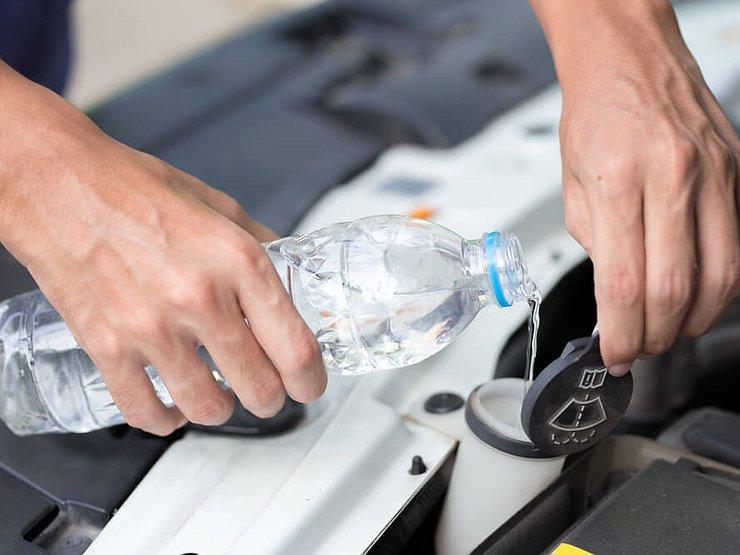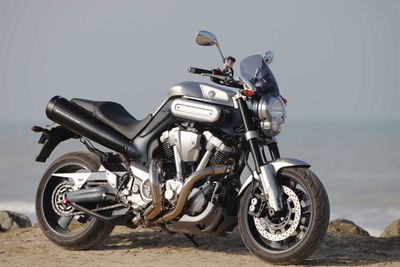
Short test: Toyota Auris Touring Sports Hybrid Style
Toyota has been in the business of hybrid for 15 years, but this Auris is still a debut for them, for the first time they have equipped a hybrid drive with one of their cars in a van version. In this way, they opened up access to new customers, especially in Europe, as this body type is only acceptable to customers in the old continent. The rest of the hybrid Auris convinced again, as six months ago, the same technological solution in the five-door sedan.
In fact, it is a car that also provides an alternative to those who would otherwise like a hybrid drive but are not thrilled with the Prius. Technologically, these are completely equivalent solutions. In terms of road behavior, the Auris ST appears to be even better than the Prius, but it is certainly at least one step ahead of the larger and more spacious Prius with the additional Plus designation.
In everyday use, it is especially suitable for those who need a slightly larger boot than the regular five-door version. In addition, it also satisfies the need for comfort and position on the road, slightly less to be commended only for the rather average braking performance (which is also confirmed by our measurements) and for not the best driving experience. A little more precision wouldn't hurt the Auris electric service.
Most of all they will like the one who uses the car mainly in the city or on ordinary roads. If we don't take the highway, the Auris can be extremely frugal in terms of fuel consumption, and petrol consumption results of around four liters (or a few tenths) are not unattainable, but quite normal. If the hybrid drive can operate under optimal conditions, that is, at moderate acceleration, at a high stop, in a hard drive (column) and at speeds up to 80 km / h, then it really turns. from. The increase in consumption is more influenced by faster driving on highways or motorways, when the gasoline engine comes to the rescue several times. If we chase this at full throttle, it will continually alert us to the possibility of higher average consumption at much higher noise levels (especially since the Auris would otherwise be extremely quiet and quiet).
The comfort in the Auris's cabin is quite solid, although the buyer can only think of the glass roof with the loud Skyview lettering as an alternative to the interior space completely covered in black fabric and plastic. Someone will like it, and someone will cover the ceiling even with the first rays of the sun. Such a roof is made of glass almost along its entire length, but there is no possibility of opening it. Of course, Toyota also offers a regular sheet metal roof for those who don't like glass (and still save on that at a surcharge).
The Style equipment level is quite rich, so with the various accessories in the Auris, it was almost perfectly thought out. Although navigation is available in a higher package, we didn't miss it. This is why it is easy for children to connect via Bluetooth to any type of mobile phone. The USB port and iPod are also in a fairly convenient location (unlike what the Verso has). It's just a little weird how Toyota imagines semi-keyless steering. You need to use the remote unlock key and then you have to put it back in your pocket. You launch the auris by clicking the button. It is also interesting that after that the car is ready to drive, in any case, it is started by an electric motor, and gasoline starts working as needed.
In terms of price, this Auris TS is competitive, which is again a very positive signal from Toyota. Hybridization is now perfectly acceptable!
Text: Tomaž Porekar
Toyota Auris station wagon sporty hybrid style
Basic data
| Sales: | Toyota Adria Ltd. |
|---|---|
| Base model price: | 14.600 € |
| Test model cost: | 22.400 € |
| Calculate the cost of auto insurance | |
| Acceleration (0-100 km / h): | 11,5 with |
| Maximum speed: | 175 km / h |
| Mixed flow ECE: | 5,3l / 100km |
Technical information
| engine: | 4-cylinder - 4-stroke - in-line - petrol - displacement 1.798 cm3 - maximum power 73 kW (99 hp) at 5.200 rpm - maximum torque 142 Nm at 4.000 rpm. electric motor: permanent magnet synchronous motor - rated voltage 650 V - maximum power 60 kW (82 hp) at 1.200-1.500 rpm - maximum torque 207 Nm at 0-1.000 rpm. Battery: NiMH rechargeable batteries with a capacity of 6,5 Ah. |
|---|---|
| Energy transfer: | front wheel drive engine - continuously variable automatic transmission - tires 225/45 R 17 H (Michelin Primacy HP). |
| Capacity: | 175 km/h top speed - 0-100 km/h acceleration in 11,2 s - fuel consumption (ECE) 3,6/3,6/3,7 l/100 km, CO2 emissions 85 g/km. |
| Mass: | empty vehicle 1.465 kg - permissible gross weight 1.865 kg. |
| External dimensions: | length 4.560 mm – width 1.760 mm – height 1.460 mm – wheelbase 2.600 mm – trunk 530–1.658 45 l – fuel tank XNUMX l. |
Our measurements
| T = 23 ° C / p = 1.015 mbar / rel. vl. = 53% / odometer status: 5.843 km | |
| Acceleration 0-100km: | 11,5s |
|---|---|
| 402m from the city: | 17,6 years ( 126 km / h) |
| Maximum speed: | 175km / h (D) |
| test consumption: | 5,3 l / 100km |
| Braking distance at 100 km / h: | 39,6m |
| AM table: | 40m |
evaluation
The larger boot Auris is the same as the tried and tested conventional hybrid. Now it's clear: Toyota's hybrid drive has matured and is a viable alternative, especially for those looking to lower fuel consumption but don't like diesels.
We praise and reproach
advanced and proven technology
fuel economy with a quiet ride
price
materials and workmanship
flexibility
capacity (hybrid technology)
possibility of short-term driving exclusively on electricity
glass roof
insufficiently precise steering mechanism
full throttle noise
just start the engine without a key
fixed glass roof

